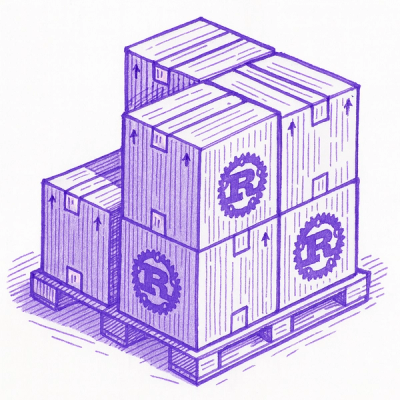
Security News
Crates.io Implements Trusted Publishing Support
Crates.io adds Trusted Publishing support, enabling secure GitHub Actions-based crate releases without long-lived API tokens.
facebookgraph
Advanced tools

facebookgraph is a Node.js client/interface for the Facebook Graph API.
async/await syntaxTable of Contents
yarn add facebookgraph
or
npm install facebookgraph
In order to use Facebook Graph API you need to have an access token which is being used to initialize FacebookGraph object. Here's an example how to fetch 5 posts of the page with the id 523008607856853.
const FacebookGraph = require('facebookgraph');
const graph = new FacebookGraph('<Your Facebook Access Token>')
const posts = await graph.fetch('523008607856853', 'posts', 5)
console.log(posts);
const zuck = await graph.get('4');
{ id: '4',
first_name: 'Mark',
last_name: 'Zuckerberg',
link: 'https://www.facebook.com/app_scoped_user_id/4/',
name: 'Mark Zuckerberg',
updated_time: '2017-01-26T08:32:59+0000' }
Search API endpoint is: https://graph.facebook.com/v2.8/search. You can search through objects of type user, page, event, group, place, placetopic.
The payload object has three properties: a search term (q), a search type (type) property and fields of each object. Check out the docs to see which fields can be requested for each object.
const pages = await graph.search({ q: 'geek', type: 'page', fields: 'name, link' })
The code above requests the name and link fields to be returned which are the part of the page public profile and do not require additional permissions. The Facebook Graph API's /search end point only returns publicly available information.
The syntax for requesting the field of a field is field{nestedField}; to request more than one nested field, separate them by commas: field{nestedField1, nestedField2, nestedField3}; e.g. specify photos.limit(2) to return only 2 photos, or photos.limit(2){link, comments.limit(3)} to return only 2 photos but link and up to 3 comments for each one.
const users = await graph.search({ q: 'geek', type: 'user', fields: 'photos.limit(2){link, comments.limit(2)}' }
By default, .search and .fetch get only first 25 corresponding elements. It is possible, however, get more results as pagination is already incorporated. There is a 2nd paramater size for both .search and .fetch which defines how many elements should be fetched in total: it can be set either to a particular number or as Infinity to go through all the results pages and gather all results
const pages = await graph.search({ q: 'geek', type: 'page', fields: 'name, link' }, Infinity)
const posts = await graph.fetch('523008607856853', 'posts', 100)
const post = await graph.post('me', { message: 'This is a test message.', link: 'https://zaiste.net' });
Set no_story to hide the post from showing up in the user feed.
const r = await graph.batch([
{ method: "GET", relative_url: "me"},
{ method: "GET", relative_url: "me/friends?limit=10"}
])
FAQs
async/await Node.js package to access Facebook Graph API
We found that facebookgraph demonstrated a not healthy version release cadence and project activity because the last version was released a year ago. It has 1 open source maintainer collaborating on the project.
Did you know?

Socket for GitHub automatically highlights issues in each pull request and monitors the health of all your open source dependencies. Discover the contents of your packages and block harmful activity before you install or update your dependencies.

Security News
Crates.io adds Trusted Publishing support, enabling secure GitHub Actions-based crate releases without long-lived API tokens.

Research
/Security News
Undocumented protestware found in 28 npm packages disrupts UI for Russian-language users visiting Russian and Belarusian domains.

Research
/Security News
North Korean threat actors deploy 67 malicious npm packages using the newly discovered XORIndex malware loader.